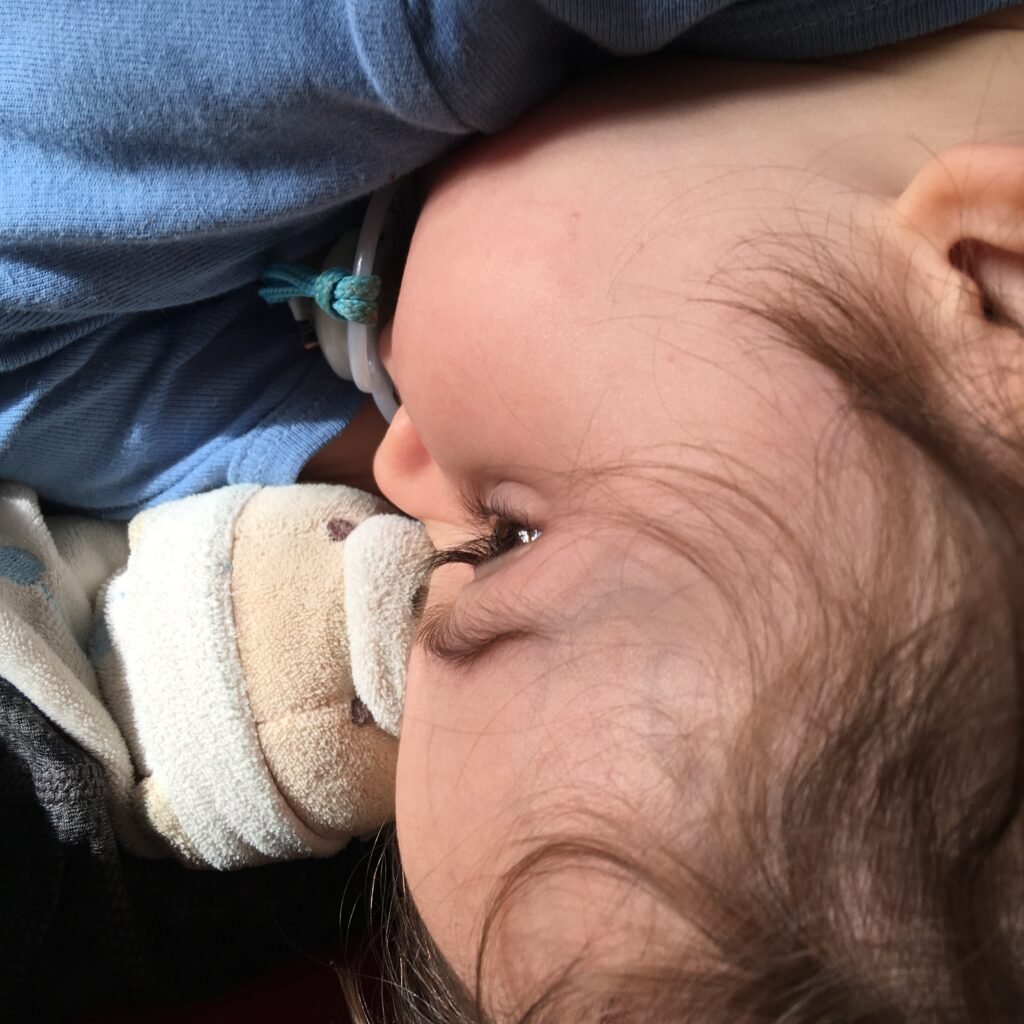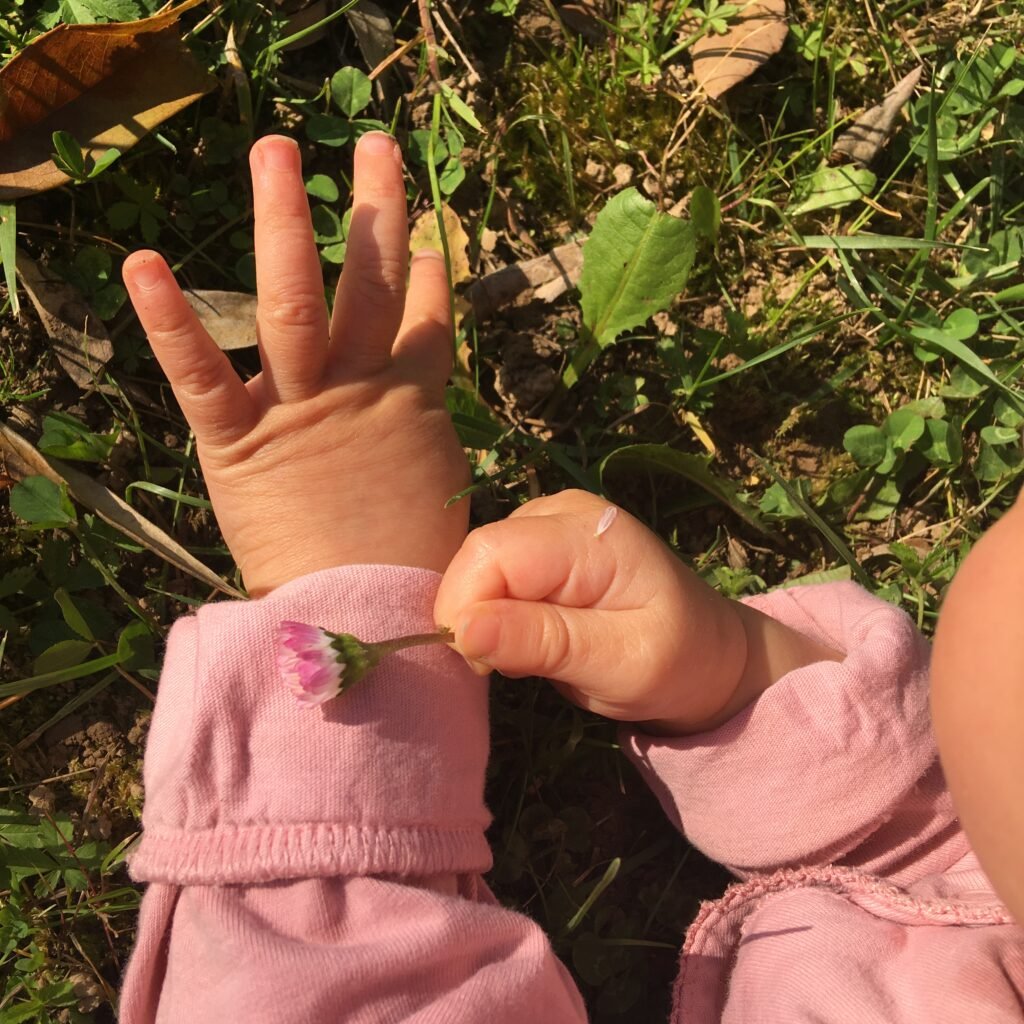Project invited by RCGE : Revaluing Care in the Global Economy
Duke University, N.C., USA . 2019-2024 .
Publication : Gestures of Care, the Invisible Power of Mothering Love, Azimuth Journal n°24, 2024.
The journal of a young mother
I am an anthropologist, a visual artist and, a young mother of twins.
During confinement, in the national press (Libération, release of May 5, 2021) I published this testimony :
“I gave birth ten days ago to twins, two months prematurely. I am still in the maternity ward. Their father doesn’t have the right to visit me. He doesn’t know his children yet. He doesn’t know anything about their smell, their skin, their personality. And when he meets them, they will have already changed a lot from the first moment I saw them. The most amazing thing for me is not having shared the joy of the birth. For ten days, I have only been touched by gloved hands. I see only an army of masked faces. How long has it been since someone smiled at me ? Or perhaps they smile at me, but behind a mask. I miss smiles like a newborn can. Often I am thinking of women who gave birth alone, rejoice alone, despair alone, on this island called lockdown.“
After I got back home, I pursued my isolated life as a young mother throughout the pandemic year as we moved to Romania, who was then unknown to me. I did not speak any Romanian when I reached Piatra Neamt. I felt, my partner was extremely careless : In Romania, babies care is the women’s duty. Men do not change diapers.
Drowned by the intensity of everyday life with two infants, I have gathered a catalogue of care gestures that I wish to share in these terms: If time is a currency, what is the value of a mother’s care? I started counting every task a mother has to do in a house in terms of minutes. I will then break down all these care gestures, according to a gesture analysis protocol on which I work as a choreographer. Finally, I intend to map the actions and activities carried out inside and outside the household, in order to compare the weight (and time) given to personal care gestures compared to family care actions, by young mothers.
Gestures of Care
If the term is not always translated into French, it is because there is no single equivalent term: to take care, to give attention, to listen, to show solicitude1. The notion of Care invites us to reflect on our relational modes. What conduct should we adopt when we want to take care of someone or something?
Here is the definition of Care given by the American philosopher Joan Tronto:
“Characteristic activity of the human species, which covers all that we do with the aim of maintaining, perpetuating and repairing our world, so that we can live in it as well as possible. This world includes our bodies, our people and our environment, all of which we seek to connect in a complex network in support of life.» (Joan Tronto, A Vulnerable World. For a policy of Care, 2009)
I will first invite my readers to ask themselves about the role and place occupied by solicitude and care in their everyday lives. The solicitude I offer, the one I receive, the care provided and the care received. How these Care processes connect us to each others, to ourselves and to the world? In other terms, how to take care of society and the world in which we are living?
The first aspect of care is defined by Tronto as caring about, “to worry about”: it is a question of noting the existence of a need, of recognizing the need to respond to it, and of evaluating the possibility of provide an answer. Caring about here implies both, the engagement of perception (to certify) and practical intelligence (to evaluate). Then comes the aspect of taking care of, of “taking in charge”: that is to say, taking responsibility for what has been observed, acting to meet the identified need. Responsibility is understood here as a form of efficiency.
This is followed by the dimension of care giving, of “taking care”, which designates the direct encounter with others through their needs or the activity in its dimension of contact with people. And here we do find the relational dimension towards which care converges. Care giving corresponds to competence: it is not enough to enter into a relationship with others, it is necessary to provide them effectively with what meets their needs. Finally, Tronto ends her description of the process of care with care receiving: “receiving care”. However, for the “giver” of care, it is a question of recognizing the way in which the one who receives it reacts to the care. At this level, a dimension of reciprocity is suggested in the care relationship: the reaction of the other is the criterion for evaluating the “success” or at least the appropriateness of the acts of care.
How can reciprocity be considered in the gestures of Care that a mother is giving to her child? When the infant is only able, his first six months, to express himself by cries — cries that his own mother is not even, at times, able to decipher — how is the latter able to manifest how Care is received? In other words: What does it mean to Care as a mother? What does it take (a mother) to care?
The archives of Care
Published every week in The Crown Letter
Every week, I am publishing an image of the “archives of Care” for The Crown Letter.




1 Agatha Zielenski, The Ethics of Care, a new way of taking care, 2012.
